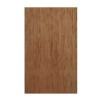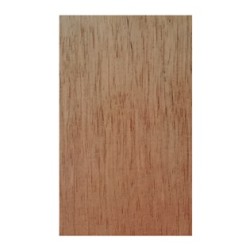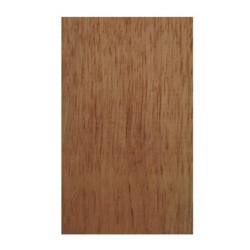Brazilian Cedar

Family: Meliaceae - Order: Sapindales
- Class: Magnoliopsida
Scientific name: Cedrela odorata
Trade name: Spanish Cedar,
Cedar, Cedro, Cigarbox Cedar.
Also known as Brazilian Cedar, Spanish cedar or Cuban
cedar, Acajou rouge, Cedro amargo, Cedro-cheiroso.
Origin: Brazil, Central and
South América
Instrumental
uses:
Guitar necks and internal guitar parts.
Tonal properties:
Very responsive and tonally balanced, similar to
mahoganies. Very stiff and is also very resistant against twisting and warping,
a reference for classical guitar necks. Very easy to work and finishes very
well.
Is a
medium-lightweight exotic wood with an average dried weight of 29 lbs/ft3 (470 kg/m3)
There are 3 more relevant species from the 6 Cedrela kinds, with very
similar wood, almost always confused, and called Cedar but distributed in
different areas.
It is important to clarify that there are overlapping species, in the
transition areas, they are: - Cedrela
angustifolia/Cedrela lilloi (Cedro de Tucumán, Cedro bayo) distributed around Argentina, Bolivia,
Brazil and Equador
- Cedrela fissilis (Argentine Rose Cedar,
Acaiacá, Cedro-amarelo), amber gold in
color with pinkish highlights. Gummy feel and strong cedar scent. Distributed
from the South of Costa Rica to Argentina.
- Cedrela montana. Distributed in Colombia
and Equador
- Cedrela salvadorensis. Distributed in Central América
- Cedrela
tonduzii. Distributed
in Central América
- Cedrela odorata. Distributed from South Mexico to
Argentina.
The characteristics of the Cedrela
odorata are:
Tree with 20-25 m of height, and diameter of 60 cm, with fast growth, with a rectilinear stem of about 10 m. It has smaller leaves, with 5-9 pairs of leathery leaflets, firm, with more protruding veins and being short-petiolate. The flowers are whitish with yellow hairs. The fruits are in the form of a woody ellipsoid capsule with winged seeds, small and flat.The color is deep reddish-brown and is deeply grooved.
Grows in the forests of firm land and swampy or flooded soil during
annual floods. The Brazilian red cedar (Cedrela odorata) of the Amazon, is highly valued and esteemed and is a
very resistant wood.
This aromatic wood is in high demand not only because
of medicinal proposes with anti-diabetic properties and antioxidants but also as
insect repellent. Is used as well in joinery, crates and boxes, plywood, window
frames, carpentry, cigar box, general purpose planks.
CITES status is protected on CITES
Appendix III. On The IUCN Red List is reported as vulnerable.
Gallery Photos




